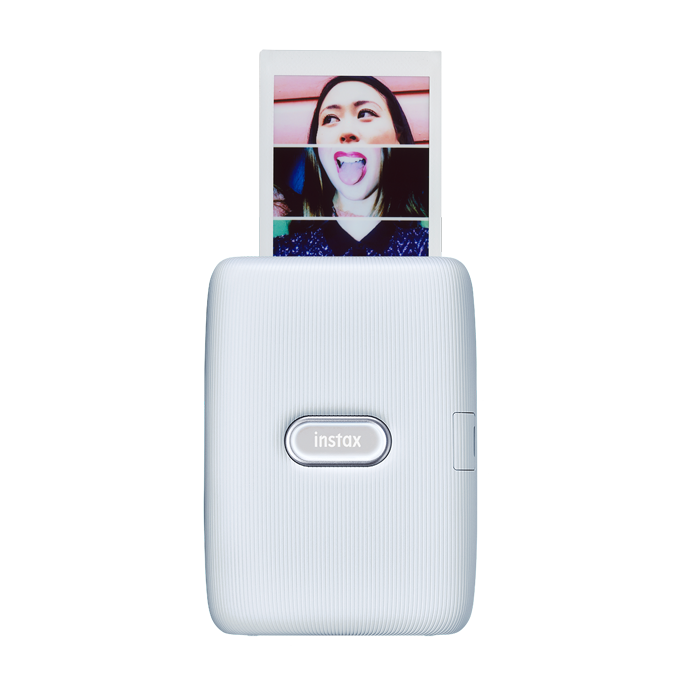How 2 Gen Z Creatives Launched Careers From Their Bedrooms
For some, a bedroom is a sanctum, a protective shell to retreat to, especially during tumultuous times. For others, it’s a means to an end — a place in which sleep is achieved. Either way, our bedroom is where we’re at our most vulnerable — and a glimpse into such an important space is both incredibly intimate and telling. In partnership with instaxⓇ, two talented multihyphenate Gen Z creatives — Claire Chang Tetzlaff and Alexander Gowon — opened up their bedrooms to give us a look at their most private space through the lens of INSTAX MINI cameras, and share how it served as the launchpad for their careers and passion projects.
AdvertisementADVERTISEMENT
Claire Chang Tetzlaff
Four years ago, Claire Chang and Chad Tetzlaff were freshmen at the Savannah College of Art and Design when the topic of traveling cross-country by van randomly came up in one of their first conversations. Cut to present day, and the two are not only married, but they’ve also embarked on a year-long endeavor to hit all 48 states in the continental U.S. — by living out of a 2013 Ford Transit Connect.
But neither could have predicted this at the start of 2020. Earlier this year, Chang Tetzlaff, who was still in school studying fabric and textiles, was working on a project called The Quarter-Life Crisis, which presented a rather morbid question: If you were to die in a year’s time, would you be happy with what you’ve accomplished? For Chang Tetzlaff, who had always wanted to travel, it pushed her toward her dream to do it full-time. So after she and Tetzlaff graduated in May, they purchased a van for under $6,000 to turn their idea into reality. They tied the knot two days before they hit the road.
“I knew we were going to [travel and live out of a van] at some point in our lives because it looked so cool, but I did not expect that it would happen this year at all,” confesses 22-year-old Chang Tetzlaff. “Our first choice was to go international, but due to the current circumstances, it led us to traveling within our own backyard.”
They spent five weeks ripping everything out of the van and transforming the interior into a home: custom-building a multipurpose workspace that doubles as a kitchen (she’s cooked everything from crepes to Japanese curry since their journey began), a makeshift sink with shelves for toiletries as their bathroom, a couch that converts into a bed. The process meant colliding their van-building ideas (she had functionality on her mind, while he focused on durability). It meant measuring and re-measuring everything with exacting precision (for a living space this small, every inch is sacred). It meant exercising discipline in whittling down their possessions to just the essentials (they sold most of their belongings to fund their trip).
AdvertisementADVERTISEMENT
“In the end, the difference in our van-building values created something neither one of us could've imagined on our own,” she says. “Everything we hold in this tiny little space is crucial and significant to us, otherwise we wouldn't dedicate the space to it. We’re looking at them every single day, so they have to be things we cherish.”
That also includes personal touches to make the van feel like home, like the fabric Chang Tetzlaff screen-printed in school that’s now used to cover the three-inch layer of foam that serves as both their couch cushion and mattress, a scratch-off map gifted to them by a friend, a banner of prayer flags from Switzerland, a collage of instaxⓇ prints of special moments, and the ceiling that they specially constructed from 1920s reclaimed wood, to which Chang Tetzlaff loves waking up.
“My favorite part of my bedroom, which is the van, is that it’s conveniently portable — I can go wherever I please, whenever I please,” she says. “The most important thing, it’s allowed me to travel on a tight budget, and it’s given me constant shelter.”
And it’s here, in her new “bedroom” where she’s marked not only a new chapter in her unconventional post-grad life, but also in her career. With her husband, they’ve launched a YouTube channel, with more than 1,000 subscribers, dedicated to documenting their travels. She’s also established the Claire Chang Tetzlaff brand, via Instagram, which promotes her artwork, like a now-sold out series inspired by the fall foliage in Vermont that was done with her punch needle and reused wool, and framed by her husband with the same 1920s reclaimed wood they used for the van. And they recently launched a line of merch.
AdvertisementADVERTISEMENT
For the most part, their travels are chronicled online, which makes tactile memories all the more precious to Chang Tetzlaff. "There’s something unique about having a moment or place captured on printed film — and not viewed through a digital screen," she says about using the INSTAX MINI 11. "Growing up, my parents would always photograph our family's travels, print them out, and arrange them into photo books. The instaxⓇ prints bring a hint of nostalgia and takes me back to my happy childhood days."
So far, they’ve already completed the East Coast loop (driving north along the coast up to Maine, then down through Ohio, Kentucky, and West Virginia), and they’re planning to hit the Southern states (South Carolina, Georgia, Florida) in December, and heading out West in the new year. They’ve crafted their itinerary — a master Excel spreadsheet that maps out their route until summer 2021 and allows them to keep track of the places and friends they’ve visited — based on the seasons, since their van has neither heat nor air conditioning. The plan is to fly to Hawaii and Alaska after — as long as it’s safe to do so. And the dream still is to travel internationally, which they hope to achieve once borders reopen, but for now, Chang Tetzlaff wouldn’t trade their van life for anything.
“I’ve always been inspired by traveling, and it’s another reason why I’m so drawn to being able to explore and see the world. It’s really clicked with my inspiration for creativity,” she says. “And this bedroom is home and being able to take that home wherever I want is something I really value.”
AdvertisementADVERTISEMENT
Alexander Gowon
Alexander Gowon first visited New York last year, and it was then that he knew the city — with its art and culture and music and diversity — was the place to be, the place that would accept him as much as it would challenge him. And in January, at 20 years old, he made the move, settling into a West Village apartment in Manhattan. But 2020 had other plans, and after only a couple of months — after getting only a taste of what the city had to offer — he temporarily returned home to Utah in March while New York City was on lockdown.
“When I was back in Utah, back in my childhood room, it felt like a stab in the heart from the universe — I just left this place to explore and expand my creative vision and have all these experiences, and now I was stuck in this room and in this house again,” he says. “Obviously, I love being surrounded by my family, but being in the bedroom where I grew up, which has the worst lime green paint, and trying to keep creating in a space that I tried so hard — and had succeeded — in leaving was probably the hardest part of my year.”
When Gowon returned to New York after restrictions eased in June, it made him appreciate the city, and his own space, even more. But it wasn’t until last month, when he switched rooms after his roommate moved out, that he felt determined to makeover his surroundings, reasoning that “I deserve to like where I’m sleeping.” That quandary — feeling torn between wanting to make a space your own and knowing that it’s only temporary — is familiar to most New York transplants.
AdvertisementADVERTISEMENT
He ordered a rug, created a collage using magazine tears, bought himself fresh flowers, arranged his candles and books to his liking, and hung up his own artwork — pieces that are vibrant, made all the more rich in contrast against his stark white walls. The result is an aesthetic he’s honed over the years: simple but colorful. Scattered throughout are prints from his INSTAX MINI 11 camera, which inspires him to create through a different lens, forcing him to focus on what he wants in the frame. "I love the rawness it captures," he says about the camera, which he often uses to take behind-the-scenes shots at a photoshoot or a painting he's worked on. "I love capturing precious moments and turning them into memories — having a physical copy of those memories is so important to me."
Gowon’s bedrooms — past and present — have always been the place from which he would create. A new venture this year was the release of his very first single: “Normal Boy,” a melodic, melancholic song that’s based on his childhood and feeling like an outsider and trying to fit in while knowing that wasn’t true to his most authentic self. With the help of friends, the lyrics were written in two days. He recorded it, sent it to a producer, and filmed a video. In total, it took a month.
“It was an experiment — music has always been in the back of my mind, something I’ve always wanted to, but I didn’t necessarily have the confidence to do it,” Gowon says. “My room overlooks a beautiful garden — the window is my favorite thing about my room, and I could just sit and look outside for hours — and it was one of those moments when I was in the mood to write. With all of my work, [inspiration] hits me like a train and I have to do it right then and there. And being in New York, I might as well start a new path, too.”
AdvertisementADVERTISEMENT
Earlier this year, he also launched Goon by Alex, an online platform that showcases not only his artwork, but also the work of other creatives, with the goal to turn it into a hardcover book. And he’s been busy painting abstract art and sometimes “creative, funky portraits,” both commissioned (he’s done about 20 to 30 this year alone) and personal pieces when the mood strikes, when he needs to put his emotions down onto canvas.
Gowon offers one particular piece as an example — his proudest work — that he created after his first heartbreak: his take on a portrait from another artist, pulling a palette of blues and swirling them to communicate heartache, pain, and sadness. It’s a painting that holds a special place in his heart, one that he would never let go.
“Where I’m creating is where I’m at my most vulnerable, because my art is vulnerable,” he says of his bedroom, which is the most important room in his apartment (he doesn’t even own furniture outside his room). “I’m very inspired by the things I choose to place in my room, and in here, it’s perfect because I have everything I need. I’ll always remember it because it’s my first apartment moving to the city, and I wouldn’t want to be anywhere else.”
AdvertisementADVERTISEMENT










